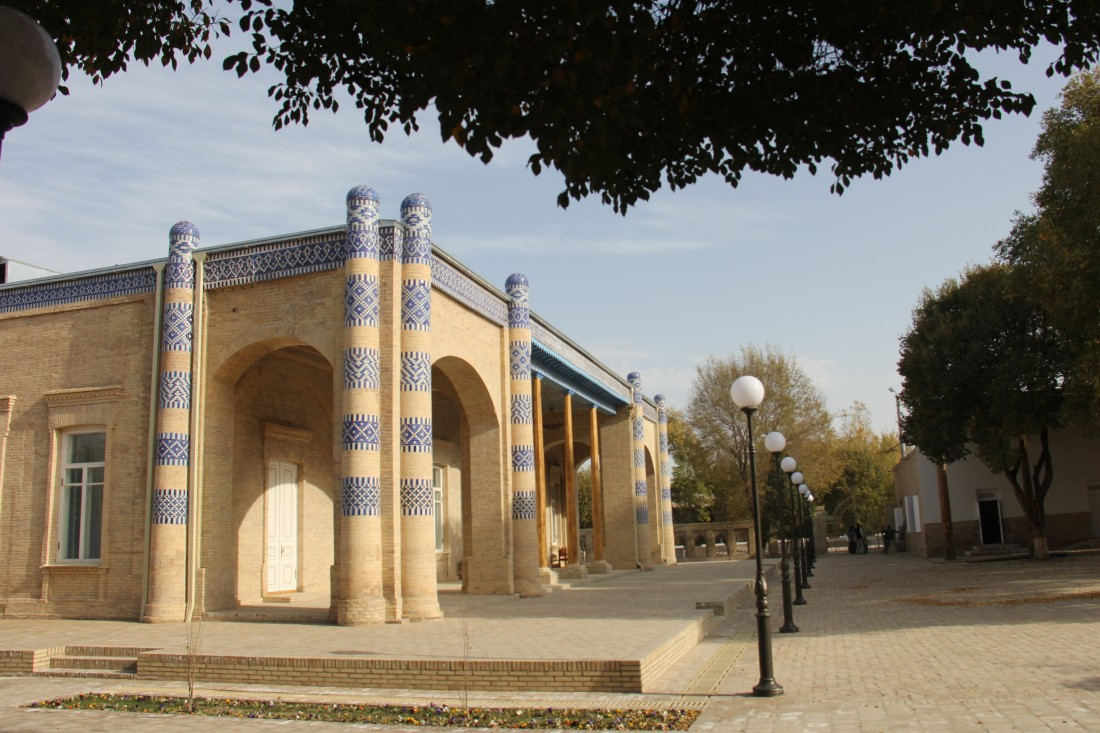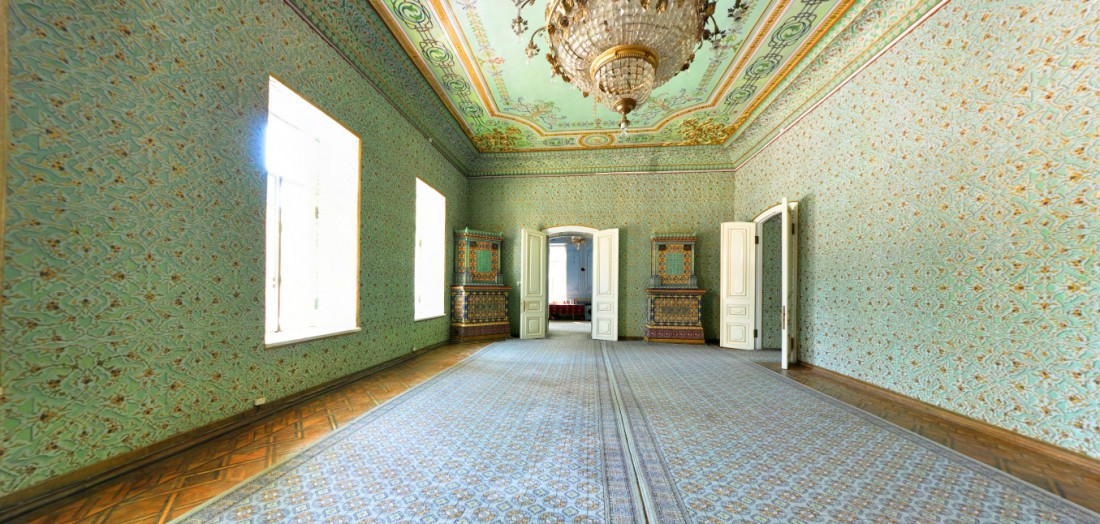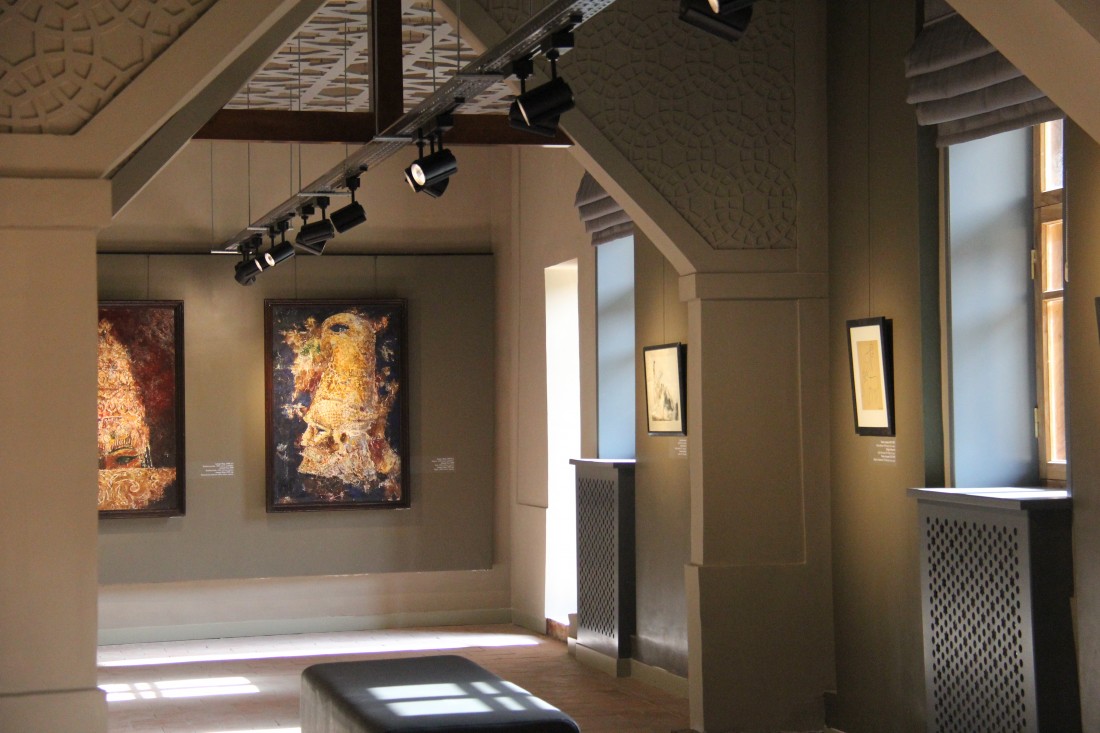Another reason to come to the Khorezm region and see the magnificent Khiva
History pages are full of stories about the luxurious life of Eastern khans and emirs. And, of course, every ruler tried to surround himself with palace chambers, wonderful gardens and impressive royal halls. For this purpose, the most skilled craftsmen, jewelers of architectural craft were invited.
Nurullabay Palace conveys the history of Khiva of the late XIX and early XX centuries and is not inferior to other palaces in beauty and charm, brilliance, and splendor. The history of the construction of the palace is interesting.

Muhammad Rakhimkhan II (1845-1910) asked a rich man from Khiva Nurullabay to sell his garden. The merchant Nurullabay agreed, but on one condition, if the name of the garden remains the same. Khan agreed to the condition. Thus, the name Nurullabay has been preserved.
Muhammad Rakhimkhan II decided to build a large summer palace on the territory of the garden for his beloved son Asfandiyar Khan (1871-1918). The palace is located in the north-western part of Ichan-Kala. It is surrounded by a high wall and consists of four courtyards. You can get to the palace through the front gate, inside which there were special rooms for guards and offices.
The palace acquired its final appearance after the death of Muhammad Rakhimkhan II, when his son Asfandiyar Khan ascended the throne. The palace was rebuilt at the request of the khan, in particular, a separate building was erected with a ceremonial hall for the reception of dignitaries. For the construction of the reception hall, the chief vizier of Khiva went to Moscow to consult with leading architects. Later, architects led by the famous Russian engineer A.M. Roop came to Khiva to conduct the construction of the city post office, hospital and, of course, the palace reception.
The palace acquired its final appearance after the death of Muhammad Rakhimkhan II, when his son Asfandiyar Khan ascended the throne. The palace was rebuilt at the request of the khan, in particular, a separate building was erected with a ceremonial hall for the reception of dignitaries. For the construction of the reception hall, the chief vizier of Khiva went to Moscow to consult with leading architects. Later, architects led by the famous Russian engineer A.M. Roop came to Khiva to conduct the construction of the city post office, hospital and, of course, the palace reception.
Bricks of special firing were specially made for the reception. The best masters of Khiva Khanate were engaged in bricklaying. The roof was covered with sheets of thin iron. Parquet floors were laid in the halls of the palace, and Mennonite Germans living in Khiva were invited to cover them, as well as to install windows and doors.
The walls were covered with oil paints and carved patterns. The ceilings were decorated with floral drawings and angels, and Russian artists were invited to decorate them. The ceiling was artfully decorated by Khiva masters with elegant geometric ornaments, a thin layer of gold was applied on top. The seventh room deserves special attention, its ceiling is decorated with precious stones and peacock feathers.
Porcelain stoves-fireplaces delivered from Russia in disassembled form, as well as luxurious electric chandeliers were installed in seven halls, which was an innovation for the Khanate of Khiva. To light up all the bulbs at the same time, a small engine was installed.
For some time there was a museum and a House of Enlightenment in the palace, today the residence has been renovated and restored to its original form. Now it is a palace complex consisting of 9 large and small rooms, a reception room, an archive, a madrasah, a room for servants and guards, a garden and flower beds.
Nurullabay Palace embodies the traditional features of the Khorezm national housing construction. We recommend visiting Khiva, Nurullabaya Palace!

Map
Working hours: 9:00 AM - 6:00 PM, Mon-Fri
For any questions
ПОЛЬЗОВАТЕЛЬСКОЕ СОГЛАШЕНИЕ
1. Определение
Настоящее Пользовательское соглашение (далее — Соглашение) является Публичной офертой в соответствии со статьёй 367 Гражданского кодекса Республики Узбекистан от 21.12.1995 (https://lex.uz/ru/docs/111181#162763) и регулирует порядок использования материалов и Сервисов сайта Государственного унитарного предприятия «Национальный PR-центр» (далее — Предприятие), размещённого на веб-сайте и поддоменах Национального Туристического Информационного Центра: https://uzbekistan.travel/ (далее — Сайт).
Посетитель и (или) Пользователь подтверждает, что ознакомлен, полностью и безоговорочно принимает все условия настоящего Соглашения и обязуется их соблюдать.
Использование Сайта Пользователем означает полное принятие данного Соглашения «как есть» в форме акцепта.
Соглашение вступает в силу с момента посещения любой страницы Сайта и (или) регистрации на Сайте и действует бессрочно во время пользования Сервисами Сайта.
Настоящее Соглашение обязательно для исполнения всеми Посетителями и Пользователями без каких-либо изъятий и дополнительных согласований.
Пользователь обязуется самостоятельно проверять актуальную редакцию Соглашения на Сайте перед использованием Сервисов.
2. Предмет Соглашения
Предметом настоящего Соглашения являются правила использования материалов Сайта и предоставление Посетителю и (или) Пользователю возможности использования Сервисов Сайта.
Предприятие является правообладателем исключительных прав на Сайт в целом и на его составные части, включая все виды контента: логотипы, товарные знаки, тексты, статьи, аннотации, иллюстрации, фотографии, графику, аудио- и видеофайлы, пользовательские интерфейсы, дизайн, структуру, программы, базы данных.
Я прочитал(а) и соглашаюсь с условиями использования сайта и политикой конфиденциальности.
